Experimental Investigation and Proposal of Artificial Neural Network Models of Lead and Cadmium Heavy Metal Ion Removal from Water Using Porous Nanomaterials
Abstract
:1. Introduction
2. Materials and Methods
2.1. Required Materials for Solutions
2.2. Synthesis of Mesoporous SBA-15 and
2.3. Synthesis of Mesoporous MCM-41 and -MCM-41
2.4. The Experiment Procedure
2.5. An introduction to Artificial Neural Network (ANN)
3. Results
3.1. X-ray Diffraction (XRD) Pattern of Samples
3.2. FT-IR Infrared Spectroscopy Analysis
3.3. Examination of SEM Images
3.4. Surface Analysis (BET)
3.5. Examining Parameters Affecting Adsorption
3.5.1. Examining the Effect of the Absorbent Amount
3.5.2. Investigation of Adsorption Time
3.5.3. Examining the Effect of pH on Adsorption
3.6. Adsorbent Repeatability
3.7. XRD of the Recovered Sample
4. Artificial Neural Network
5. Conclusions
Author Contributions
Funding
Institutional Review Board Statement
Informed Consent Statement
Data Availability Statement
Acknowledgments
Conflicts of Interest
References
- Shrestha, R.; Ban, S.; Devkota, S.; Sharma, S.; Joshi, R.; Tiwari, A.P.; Kim, H.Y.; Joshi, M.K. Technological trends in heavy metals removal from industrial wastewater: A review. J. Environ. Chem. Eng. 2021, 9, 105688. [Google Scholar] [CrossRef]
- Zhang, X.; Ma, F.; Dai, Z.; Wang, J.; Chen, L.; Ling, H.; Soltanian, M.R. Radionuclide transport in multi-scale fractured rocks: A review. J. Hazard. Mater. 2022, 424, 127550. [Google Scholar] [CrossRef] [PubMed]
- Dai, Z.; Ma, Z.; Zhang, X.; Chen, J.; Ershadnia, R.; Luan, X.; Soltanian, M.R. An integrated experimental design framework for optimizing solute transport monitoring locations in heterogeneous sedimentary media. J. Hydrol. 2022, 614, 128541. [Google Scholar] [CrossRef]
- Peralta-Videa, J.R.; Lopez, M.L.; Narayan, M.; Saupe, G.; Gardea-Torresdey, J. The biochemistry of environmental heavy metal uptake by plants: Implications for the food chain. Int. J. Biochem. Cell Biol. 2009, 41, 1665–1677. [Google Scholar] [CrossRef]
- Zhang, X.; Wang, Z.; Reimus, P.; Ma, F.; Soltanian, M.R.; Xing, B.; Zang, J.; Wang, Y.; Dai, Z. Plutonium reactive transport in fractured granite: Multi-species experiments and simulations. Water Res. 2022, 224, 119068. [Google Scholar] [CrossRef]
- Lin, X.; Lu, K.; Hardison, A.K.; Liu, Z.; Xu, X.; Gao, D.; Gong, J.; Gardner, W.S. Membrane inlet mass spectrometry method (REOX/MIMS) to measure 15N-nitrate in isotope-enrichment experiments. Ecol. Indic. 2021, 126, 107639. [Google Scholar] [CrossRef]
- Guo, Z.; Zhan, R.; Shi, Y.; Zhu, D.; Pan, J.; Yang, C.; Wang, Y.; Wang, J. Innovative and green utilization of zinc-bearing dust by hydrogen reduction: Recovery of zinc and lead, and synergetic preparation of Fe/C micro-electrolysis materials. Chem. Eng. J. 2023, 456, 141157. [Google Scholar] [CrossRef]
- Li, H.; Zhao, S.; Zhang, W.; Du, H.; Yang, X.; Peng, Y.; Han, D.; Wang, B.; Li, Z. Efficient esterification over hierarchical Zr-Beta zeolite synthesized via liquid-state ion-exchange strategy. Fuel 2023, 342, 127786. [Google Scholar] [CrossRef]
- Hasheminasab, M.; Bozorgnezhad, A.; Shams, M.; Ahmadi, G.; Kanani, H. Simultaneous investigation of PEMFC performance and water content at different flow rates and relative humidities. In Proceedings of the International Conference on Nanochannels, Microchannels, and Minichannels, Chicago, IL, USA, 3–7 August 2014; American Society of Mechanical Engineers: New York, NY, USA, 2014; Volume 46278, p. V001T07A002. [Google Scholar]
- Wang, L.; Du, Y.; Zhu, Q.; Song, J.; Ou, K.; Xie, G.; Yu, Z. Regulating the Alkyl Chain Length of Quaternary Ammonium Salt to Enhance the Inkjet Printing Performance on Cationic Cotton Fabric with Reactive Dye Ink. ACS Appl. Mater. Interfaces 2023, 15, 19750–19760. [Google Scholar] [CrossRef]
- Feng, X.; Wang, B.; Gao, G.; Gao, S.; Xie, C.; Shi, J.W. MnyCo3−yOx bimetallic oxide prepared by ultrasonic technology for significantly improved catalytic performance in the reduction of NOx with NH3. Fuel 2023, 352, 129159. [Google Scholar] [CrossRef]
- Laghlimi, M.; Baghdad, B.; El Hadi, H.; Bouabdli, A. Phytoremediation mechanisms of heavy metal contaminated soils: A review. Open J. Ecol. 2015, 5, 375. [Google Scholar] [CrossRef]
- Liang, Y.; Li, J.; Xue, Y.; Tan, T.; Jiang, Z.; He, Y.; Shangguan, W.; Yang, J.; Pan, Y. Benzene decomposition by non-thermal plasma: A detailed mechanism study by synchrotron radiation photoionization mass spectrometry and theoretical calculations. J. Hazard. Mater. 2021, 420, 126584. [Google Scholar] [CrossRef] [PubMed]
- Lombi, E.; Susini, J. Synchrotron-based techniques for plant and soil science: Opportunities, challenges and future perspectives. Plant Soil 2009, 320, 1–35. [Google Scholar] [CrossRef]
- Sun, S.; Liu, H.; Zhang, J.; Wang, W.; Xu, P.; Zhu, X.; Wang, Y.; Wan, S. Application of a novel coagulant in reservoir water treatment in Qingdao. Desalination Water Treat 2023, 284, 49–60. [Google Scholar] [CrossRef]
- Wang, Z.; Hu, L.; Zhao, M.; Dai, L.; Hrynsphan, D.; Tatsiana, S.; Chen, J. Bamboo charcoal fused with polyurethane foam for efficiently removing organic solvents from wastewater: Experimental and simulation. Biochar 2022, 4, 28. [Google Scholar] [CrossRef]
- Dong, Y.; Yuan, H.; Ge, D.; Zhu, N. A novel conditioning approach for amelioration of sludge dewaterability using activated carbon strengthening electrochemical oxidation and realized mechanism. Water Res. 2022, 220, 118704. [Google Scholar] [CrossRef]
- Zhang, Q.; Hou, Q.; Huang, G.; Fan, Q. Removal of heavy metals in aquatic environment by graphene oxide composites: A review. Environ. Sci. Pollut. Res. 2020, 27, 190–209. [Google Scholar] [CrossRef]
- Hu, J.; Zhao, L.; Luo, J.; Gong, H.; Zhu, N. A sustainable reuse strategy of converting waste activated sludge into biochar for contaminants removal from water: Modifications, applications and perspectives. J. Hazard. Mater. 2022, 438, 129437. [Google Scholar] [CrossRef]
- Bai, B.; Bai, F.; Sun, C.; Nie, Q.; Sun, S. Adsorption mechanism of shell powders on heavy metal ions Pb2+/Cd2+ and the purification efficiency for contaminated soils. Front. Earth Sci. 2023, 10, 1071228. [Google Scholar] [CrossRef]
- Mariana, M.; Mulana, F.; Juniar, L.; Fathira, D.; Safitri, R.; Muchtar, S.; Bilad, M.R.; Shariff, A.H.M.; Huda, N. Development of biosorbent derived from the endocarp waste of Gayo coffee for lead removal in liquid wastewater—Effects of chemical activators. Sustainability 2021, 13, 3050. [Google Scholar] [CrossRef]
- Bai, B.; Nie, Q.; Zhang, Y.; Wang, X.; Hu, W. Cotransport of heavy metals and SiO2 particles at different temperatures by seepage. J. Hydrol. 2021, 597, 125771. [Google Scholar] [CrossRef]
- Bai, B.; Rao, D.; Chang, T.; Guo, Z. A nonlinear attachment-detachment model with adsorption hysteresis for suspension-colloidal transport in porous media. J. Hydrol. 2019, 578, 124080. [Google Scholar] [CrossRef]
- Biela, R.; Šopíková, L. Efficiency of sorption materials on the removal of lead from water. Appl. Ecol. Environ. Res. 2017, 15, 1527–1536. [Google Scholar] [CrossRef]
- Bakırdere, S.; Chormey, D.S.; Büyükpınar, Ç.; San, N.; Keyf, S. Determination of lead in drinking and wastewater by hydride generation atomic absorption spectrometry. Anal. Lett. 2016, 49, 1917–1925. [Google Scholar] [CrossRef]
- Fırat, M.; Bakırdere, S.; Fındıkoğlu, M.S.; Kafa, E.B.; Yazıcı, E.; Yolcu, M.; Büyükpınar, Ç.; Chormey, D.S.; Sel, S.; Turak, F. Determination of trace amount of cadmium using dispersive liquid-liquid microextraction-slotted quartz tube-flame atomic absorption spectrometry. Spectrochim. Acta Part B At. Spectrosc. 2017, 129, 37–41. [Google Scholar] [CrossRef]
- Ay, E.; Tekin, Z.; Özdoğan, N.; Bakırdere, S. Zirconium nanoparticles based vortex assisted ligandless dispersive solid phase extraction for trace determination of lead in domestic wastewater using flame atomic absorption spectrophotometry. Bull. Environ. Contam. Toxicol. 2022, 108, 324–330. [Google Scholar] [CrossRef] [PubMed]
- Liu, W.; Zheng, J.; Ou, X.; Liu, X.; Song, Y.; Tian, C.; Rong, W.; Shi, Z.; Dang, Z.; Lin, Z. Effective extraction of Cr (VI) from hazardous gypsum sludge via controlling the phase transformation and chromium species. Environ. Sci. Technol. 2018, 52, 13336–13342. [Google Scholar] [CrossRef]
- Zhao, Y.; Li, Q.; Cui, Q.; Ni, S.Q. Nitrogen recovery through fermentative dissimilatory nitrate reduction to ammonium (DNRA): Carbon source comparison and metabolic pathway. Chem. Eng. J. 2022, 441, 135938. [Google Scholar] [CrossRef]
- Baralkiewicz, D.; Gramowska, H.; Kózka, M.; Kanecka, A. Determination of mercury in sewage sludge by direct slurry sampling graphite furnace atomic absorption spectrometry. Spectrochim. Acta Part B At. Spectrosc. 2005, 60, 409–413. [Google Scholar] [CrossRef]
- Meng, X.; Khoso, S.A.; Jiang, F.; Zhang, Y.; Yue, T.; Gao, J.; Lin, S.; Liu, R.; Gao, Z.; Chen, P.; et al. Removal of chemical oxygen demand and ammonia nitrogen from lead smelting wastewater with high salts content using electrochemical oxidation combined with coagulation–flocculation treatment. Sep. Purif. Technol. 2020, 235, 116233. [Google Scholar] [CrossRef]
- Feng, Y.; Yang, L.; Liu, J.; Logan, B.E. Electrochemical technologies for wastewater treatment and resource reclamation. Environ. Sci. Water Res. Technol. 2016, 2, 800–831. [Google Scholar] [CrossRef]
- Song, Z.; Han, D.; Yang, M.; Huang, J.; Shao, X.; Li, H. Formic acid formation via direct hydration reaction (CO + H2O → HCOOH) on magnesia-silver composite. Appl. Surf. Sci. 2023, 607, 155067. [Google Scholar] [CrossRef]
- Bozorgnezhad, A.; Shams, M.; Ahmadi, G.; Kanani, H.; Hasheminasab, M. The experimental study of water accumulation in PEMFC cathode channel. In Proceedings of the Fluids Engineering Division Summer Meeting, Seoul, Republic of Korea, 26–31 July 2015; American Society of Mechanical Engineers: New York, NY, USA, 2015; Volume 57212, p. V001T22A004. [Google Scholar]
- Aydin, F.A.; Soylak, M. Separation, preconcentration and inductively coupled plasma-mass spectrometric (ICP-MS) determination of thorium (IV), titanium (IV), iron (III), lead (II) and chromium (III) on 2-nitroso-1-naphthol impregnated MCI GEL CHP20P resin. J. Hazard. Mater. 2010, 173, 669–674. [Google Scholar] [CrossRef] [PubMed]
- Hsiao, I.H.; Chung, C.Y. AI-infused semantic model to enrich and expand programming question generation. J. Artif. Intell. Technol. 2022, 2, 47–54. [Google Scholar] [CrossRef]
- Waziri, T.A.; Yakasai, B.M. Assessment of some proposed replacement models involving moderate fix-up. J. Comput. Cogn. Eng. 2023, 2, 28–37. [Google Scholar] [CrossRef]
- Zhang, J.; Ye, G.; Tu, Z.; Qin, Y.; Qin, Q.; Zhang, J.; Liu, J. A spatial attentive and temporal dilated (SATD) GCN for skeleton-based action recognition. CAAI Trans. Intell. Technol. 2022, 7, 46–55. [Google Scholar] [CrossRef]
- Kumar, M.; Nandi, M.; Pakshirajan, K. Recent advances in heavy metal recovery from wastewater by biogenic sulfide precipitation. J. Environ. Manag. 2021, 278, 111555. [Google Scholar] [CrossRef]
- Deng, Y.; Zeng, Z.; Jha, K.; Huang, D. Problem-Based Cybersecurity Lab with Knowledge Graph as Guidance. J. Artif. Intell. Technol. 2021, 2, 55–61. [Google Scholar] [CrossRef]
- Fang, B.; Jiang, M.; Shen, J.; Stenger, B. Deep generative inpainting with comparative sample augmentation. J. Comput. Cogn. Eng. 2022, 1, 174–180. [Google Scholar] [CrossRef]
- Pan, Z.F.; An, L. Removal of heavy metal from wastewater using ion exchange membranes. Appl. Ion Exch. Mater. Environ. 2019, 25–46. [Google Scholar] [CrossRef]
- Hassan, F.S.; Gutub, A. Improving data hiding within colour images using hue component of HSV colour space. CAAI Trans. Intell. Technol. 2022, 7, 56–68. [Google Scholar] [CrossRef]
- Jia, Z.; Wang, W.; Zhang, J.; Li, H. Contact High-Temperature Strain Automatic Calibration and Precision Compensation Research. J. Artif. Intell. Technol. 2022, 2, 69–76. [Google Scholar]
- Noah, N.F.M.; Jusoh, N.; Othman, N.; Sulaiman, R.N.R.; Parker, N.A.M.K. Development of stable green emulsion liquid membrane process via liquid–liquid extraction to treat real chromium from rinse electroplating wastewater. J. Ind. Eng. Chem. 2018, 66, 231–241. [Google Scholar] [CrossRef]
- Baba-Ahmadi, S.B.; Hashemian, M.; Khosravi, M.; Khandan, A. An experimental and analytical investigation of novel nanocomposite reinforced with nanoclay with enhanced properties for low velocity impact test. J. Nanostructures 2020, 10, 92–106. [Google Scholar]
- Sharma, V.; Singh, H.; Guleria, S.; Bhardwaj, N.; Puri, S.; Arya, S.K.; Khatri, M. Application of superparamagnetic iron oxide nanoparticles (SPIONs) for heavy metal adsorption: A 10-year meta-analysis. Environ. Nanotechnol. Monit. Manag. 2022, 18, 100716. [Google Scholar] [CrossRef]
- Pirouzmand, M.; Asadi, M.; Mohammadi, A. The remarkable activity of template-containing Mg/MCM-41 and Ni/MCM-41 in CO2 sequestration. Greenh. Gases Sci. Technol. 2018, 8, 462–468. [Google Scholar] [CrossRef]
- Anbia, M.; Çelik, M.S.; Ghorbani, F.; Younesi, H. Aqueous cadmium ions removal by adsorption on aptms grafted mesoporous silica mcm-41 in batch and fixed bed column processes. Int. J. Eng. 2013, 26, 473–488. [Google Scholar]
- Chaudhary, V.; Sharma, S. An overview of ordered mesoporous material SBA-15: Synthesis, functionalization and application in oxidation reactions. J. Porous Mater. 2017, 24, 741–749. [Google Scholar] [CrossRef]
- Yang, G.; Deng, Y.; Ding, H.; Lin, Z.; Shao, Y.; Wang, Y. A facile approach to synthesize MCM-41 mesoporous materials from iron ore tailing: Influence of the synthesis conditions on the structural properties. Appl. Clay Sci. 2015, 111, 61–66. [Google Scholar] [CrossRef]
- Dreßen, A.; Hilberath, T.; Mackfeld, U.; Rudat, J.; Pohl, M. Phenylalanine ammonia lyase from Arabidopsis thaliana (AtPAL2): A potent MIO-enzyme for the synthesis of non-canonical aromatic alpha-amino acids: Part II: Application in different reactor concepts for the production of (S)-2-chloro-phenylalanine. J. Biotechnol. 2017, 258, 158–166. [Google Scholar] [CrossRef]
- Teimouri, M.; Khorsandi, H.; Aghapour, A.A.; Jafari, S.J. Degradation and Mineralization of Malachite Green Dye in Aqueous Solution by Electro-Fenton Process Using Iron Electrodes. Int. J. Health Life Sci. 2018, 4, e79605. [Google Scholar] [CrossRef]
- Zhang, D.; Li, J. Ordered SBA-15 mesoporous silica with high amino-functionalization for adsorption of heavy metal ions. Chin. Sci. Bull. 2013, 58, 879–883. [Google Scholar] [CrossRef]
- Azimov, F.; Markova, I.; Stefanova, V.; Sharipov, K. Synthesis and characterization of SBA-15 and Ti-SBA-15 nanoporous materials for DME catalysts. J. Univ. Chem. Technol. Metall. 2012, 47, 333–340. [Google Scholar]
- Chen, Z.; Zhou, L.; Zhang, F.; Yu, C.; Wei, Z. Multicarboxylic hyperbranched polyglycerol modified SBA-15 for the adsorption of cationic dyes and copper ions from aqueous media. Appl. Surf. Sci. 2012, 258, 5291–5298. [Google Scholar] [CrossRef]
- Tadjarodi, A.; Jalalat, V.; Zare-Dorabei, R. Synthesis and characterization of functionalized SBA-15 Mesoporous Silica by N, N-Bis (salicylidene) ethylenediamine Schiff-Base. J. Nanostructures 2013, 3, 477–482. [Google Scholar]
- Dehghani, M.H.; Sanaei, D.; Ali, I.; Bhatnagar, A. Removal of chromium (VI) from aqueous solution using treated waste newspaper as a low-cost adsorbent: Kinetic modeling and isotherm studies. J. Mol. Liq. 2016, 215, 671–679. [Google Scholar] [CrossRef]
- Guo, H.; Jeong, K.; Lim, J.; Jo, J.; Kim, Y.M.; Park, J.P.; Kim, J.H.; Cho, K.H. Prediction of effluent concentration in a wastewater treatment plant using machine learning models. J. Environ. Sci. 2015, 32, 90–101. [Google Scholar] [CrossRef]
- Icke, O.; van Es, D.M.; de Koning, M.F.; Wuister, J.J.G.; Ng, J.; Phua, K.M.; Koh, Y.K.K.; Chan, W.J.; Tao, G. Performance improvement of wastewater treatment processes by application of machine learning. Water Sci. Technol. 2020, 82, 2671–2680. [Google Scholar] [CrossRef]
- Bernardelli, A.; Marsili-Libelli, S.; Manzini, A.; Stancari, S.; Tardini, G.; Montanari, D.; Anceschi, G.; Gelli, P.; Venier, S. Real-time model predictive control of a wastewater treatment plant based on machine learning. Water Sci. Technol. 2020, 81, 2391–2400. [Google Scholar] [CrossRef]
- Wang, D.; Thunéll, S.; Lindberg, U.; Jiang, L.; Trygg, J.; Tysklind, M.; Souihi, N. A machine learning framework to improve effluent quality control in wastewater treatment plants. Sci. Total Environ. 2021, 784, 147138. [Google Scholar] [CrossRef]
- El-Rawy, M.; Abd-Ellah, M.K.; Fathi, H.; Ahmed, A.K.A. Forecasting effluent and performance of wastewater treatment plant using different machine learning techniques. J. Water Process Eng. 2021, 44, 102380. [Google Scholar] [CrossRef]
- Zaghloul, M.S.; Achari, G. Application of machine learning techniques to model a full-scale wastewater treatment plant with biological nutrient removal. J. Environ. Chem. Eng. 2022, 10, 107430. [Google Scholar] [CrossRef]
- Mamandipoor, B.; Majd, M.; Sheikhalishahi, S.; Modena, C.; Osmani, V. Monitoring and detecting faults in wastewater treatment plants using deep learning. Environ. Monit. Assess. 2020, 192, 148. [Google Scholar] [CrossRef]
- Maihulla, A.S.; Yusuf, I.; Bala, S.I. Reliability and performance analysis of a series-parallel system using Gumbel–Hougaard family copula. J. Comput. Cogn. Eng. 2022, 1, 74–82. [Google Scholar] [CrossRef]
- Wu, Z.; Luo, G.; Yang, Z.; Guo, Y.; Li, K.; Xue, Y. A comprehensive review on deep learning approaches in wind forecasting applications. CAAI Trans. Intell. Technol. 2022, 7, 129–143. [Google Scholar] [CrossRef]
- Eskandari, E.; Alimoradi, H.; Pourbagian, M.; Shams, M. Numerical investigation and deep learning-based prediction of heat transfer characteristics and bubble dynamics of subcooled flow boiling in a vertical tube. Korean J. Chem. Eng. 2022, 39, 3227–3245. [Google Scholar] [CrossRef]
- Alimoradi, H.; Eskandari, E.; Pourbagian, M.; Shams, M. A parametric study of subcooled flow boiling of Al2O3/water nanofluid using numerical simulation and artificial neural networks. Nanoscale Microscale Thermophys. Eng. 2022, 26, 129–159. [Google Scholar] [CrossRef]
- Ly, Q.V.; Truong, V.H.; Ji, B.; Nguyen, X.C.; Cho, K.H.; Ngo, H.H.; Zhang, Z. Exploring potential machine learning application based on big data for prediction of wastewater quality from different full-scale wastewater treatment plants. Sci. Total Environ. 2022, 832, 154930. [Google Scholar] [CrossRef]
- Chamgordani, M.A. The Entanglement Properties of Superposition of Fermionic Coherent States. Int. J. Theor. Phys. 2022, 61, 33. [Google Scholar] [CrossRef]
- Bordbar, M.; Naderi, N.; Alimoradi Chamgordani, M. The relation of entanglement to the number of qubits and interactions between them for different graph states. Indian J. Phys. 2021, 95, 901–909. [Google Scholar] [CrossRef]
- Torregrossa, D.; Leopold, U.; Hernández-Sancho, F.; Hansen, J. Machine learning for energy cost modelling in wastewater treatment plants. J. Environ. Manag. 2018, 223, 1061–1067. [Google Scholar] [CrossRef] [PubMed]
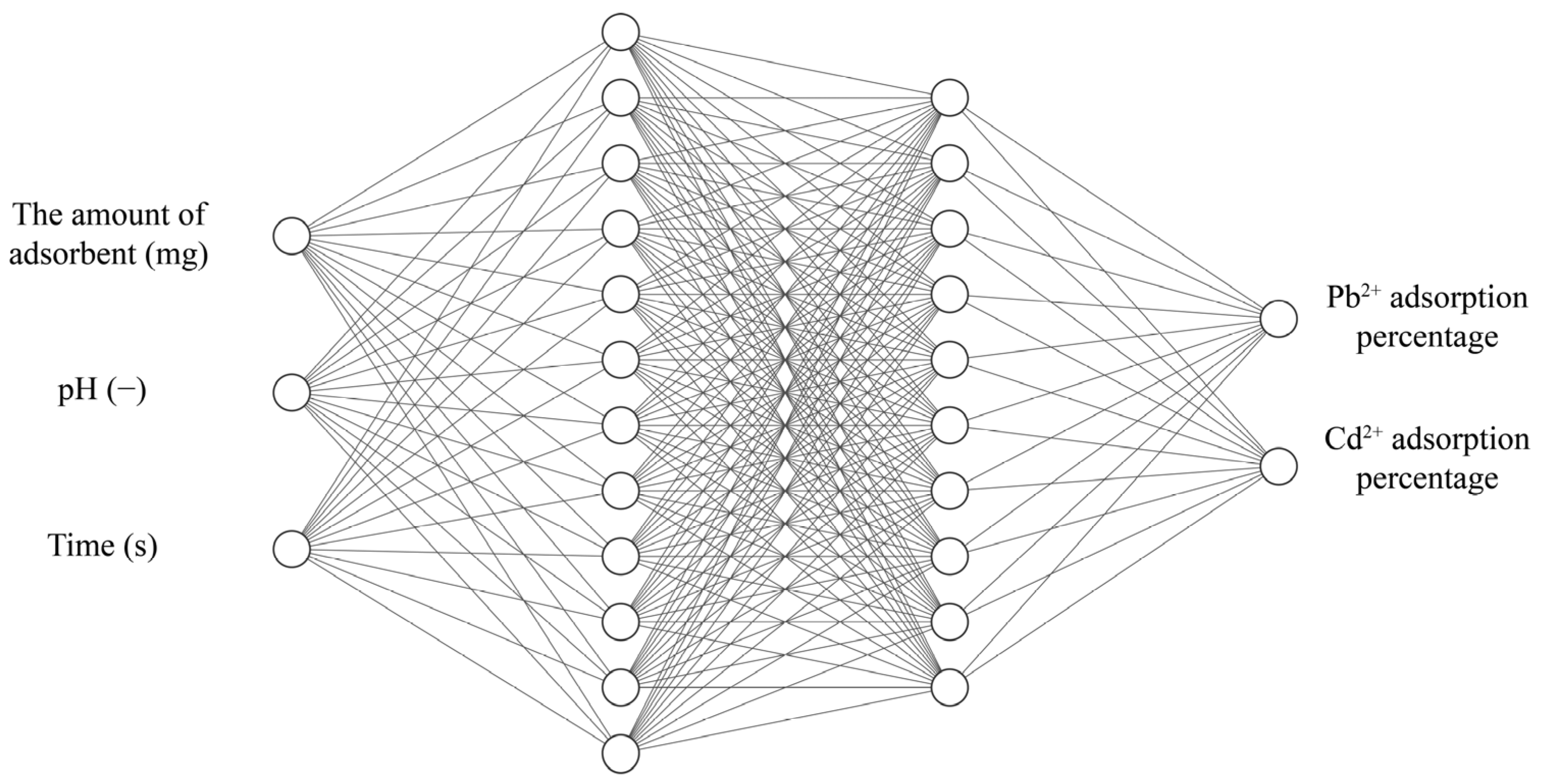
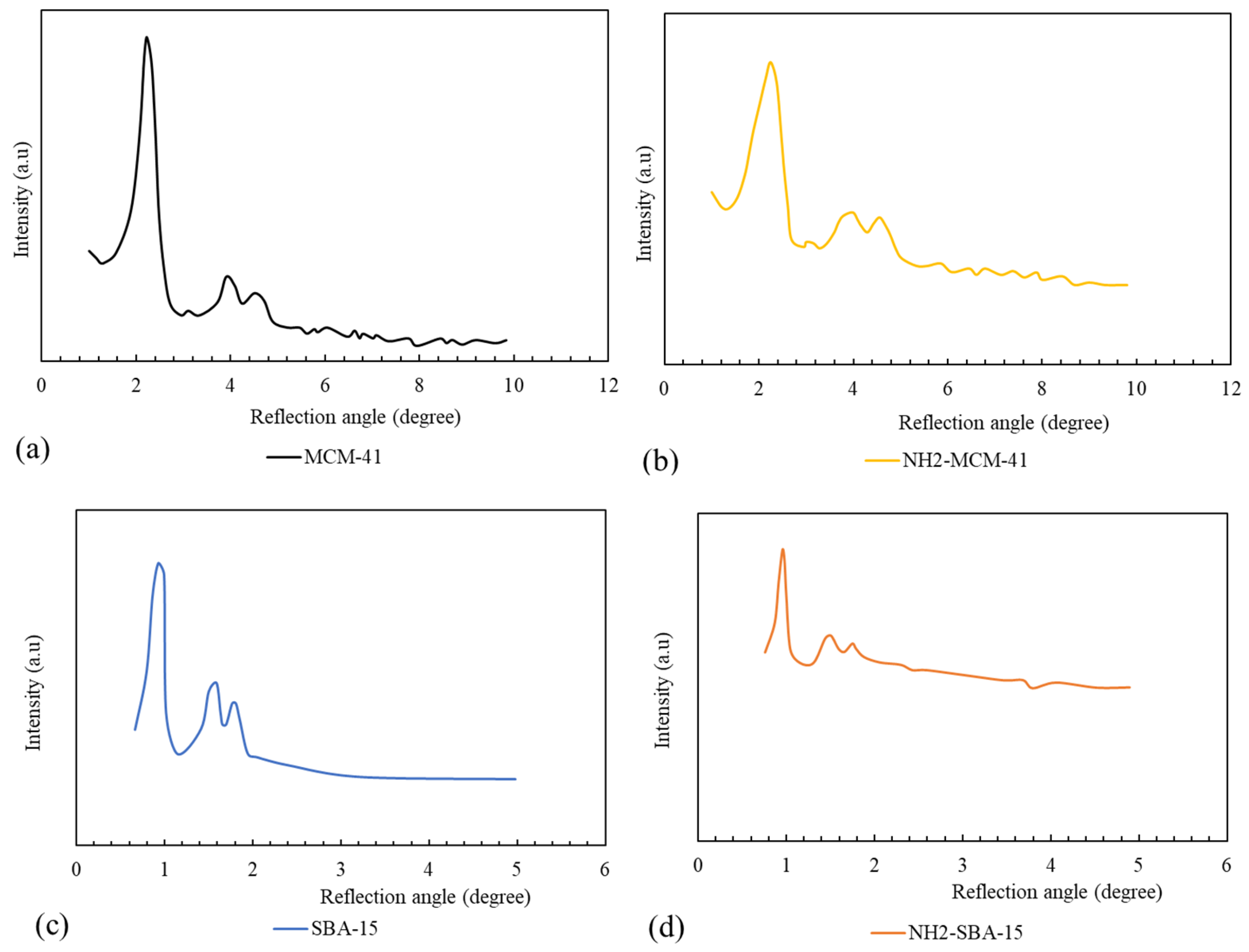
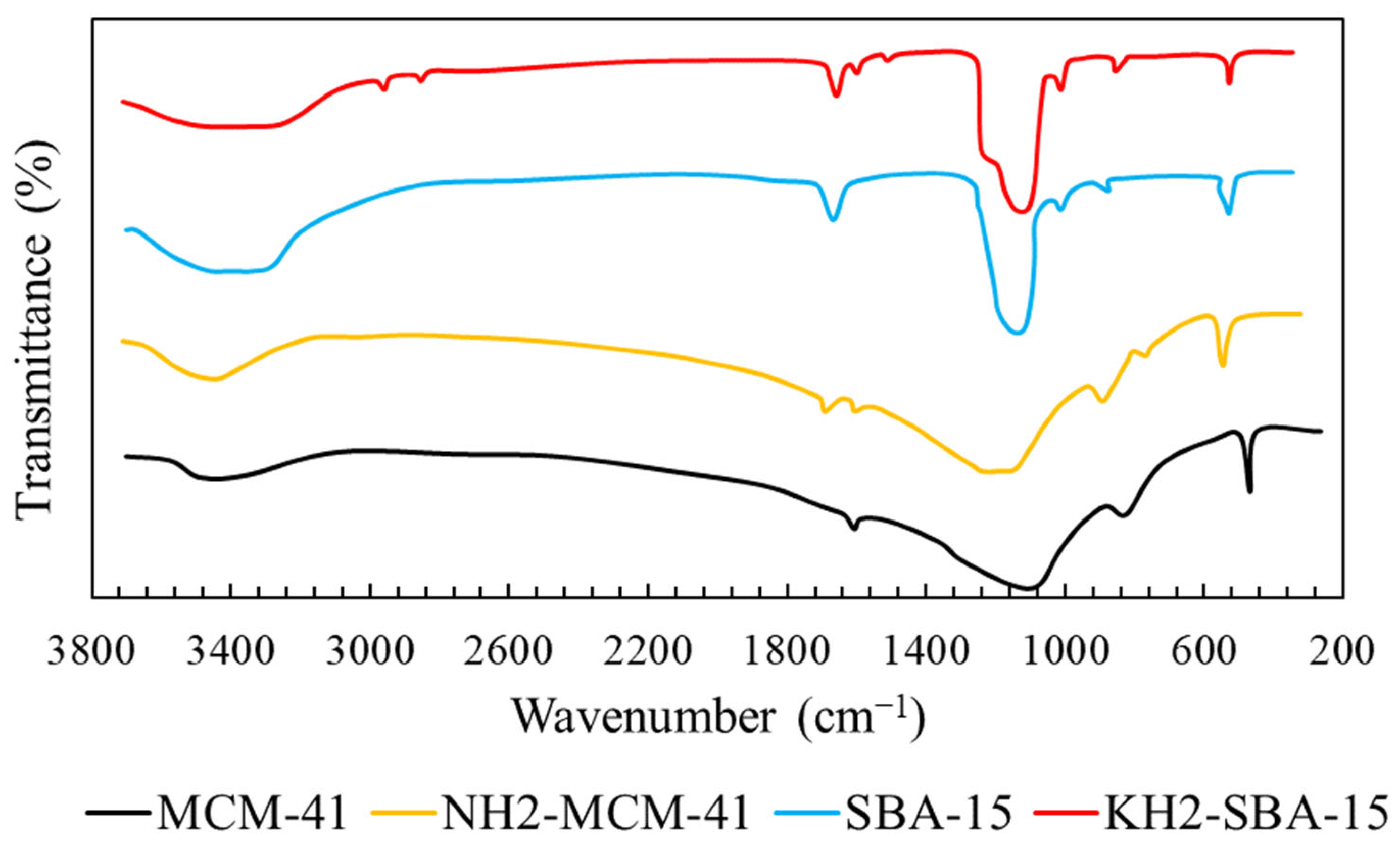
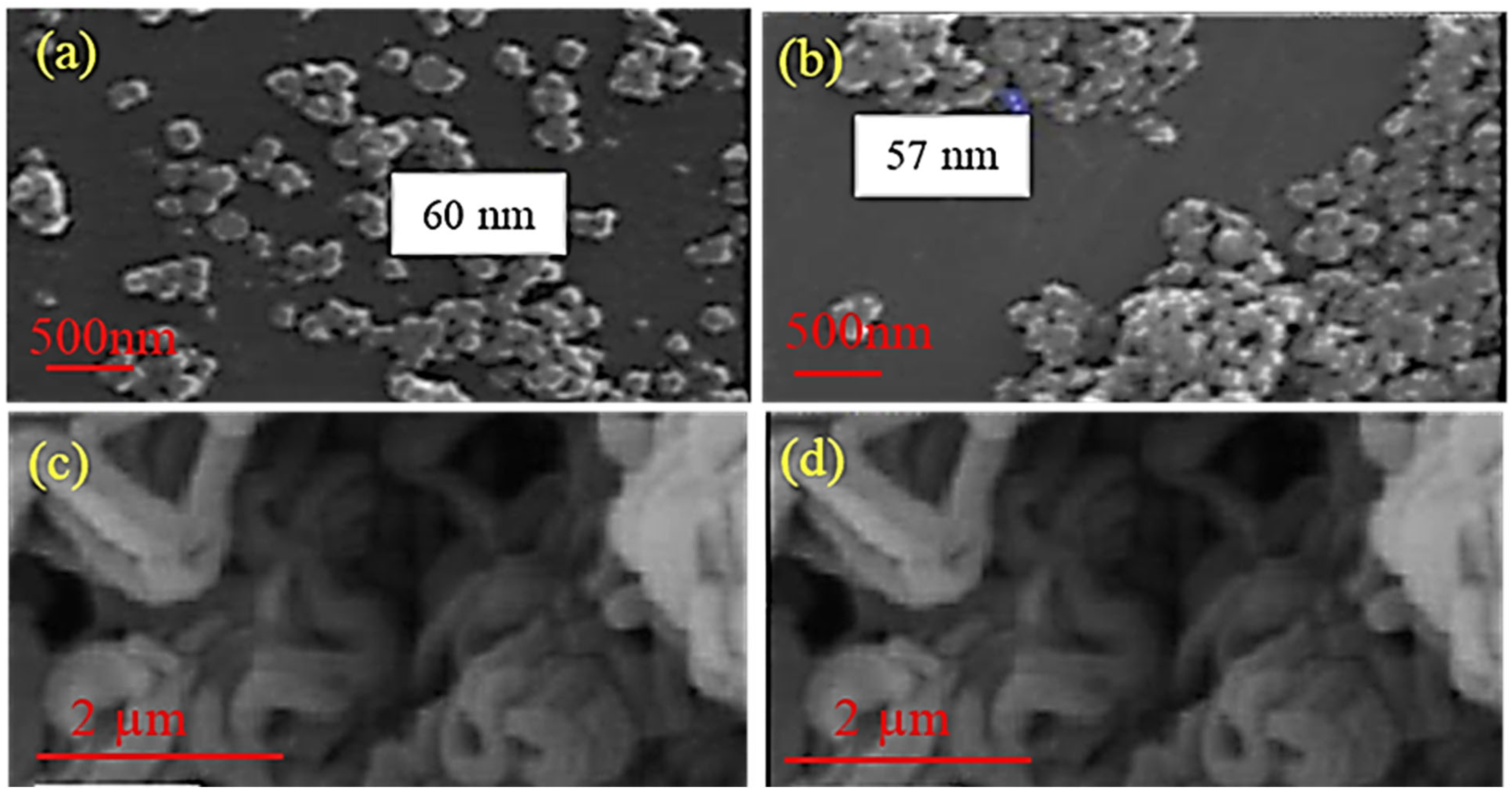
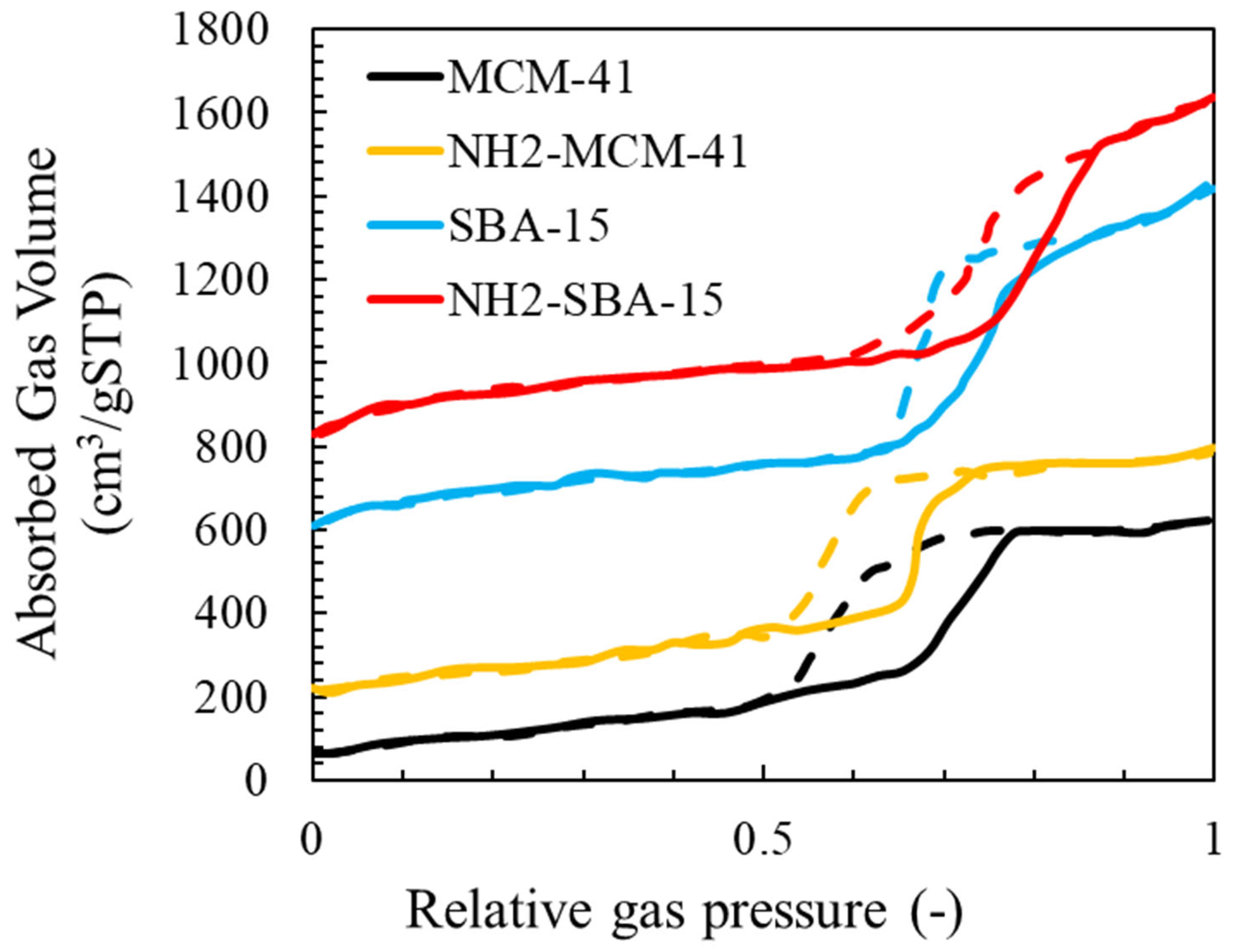
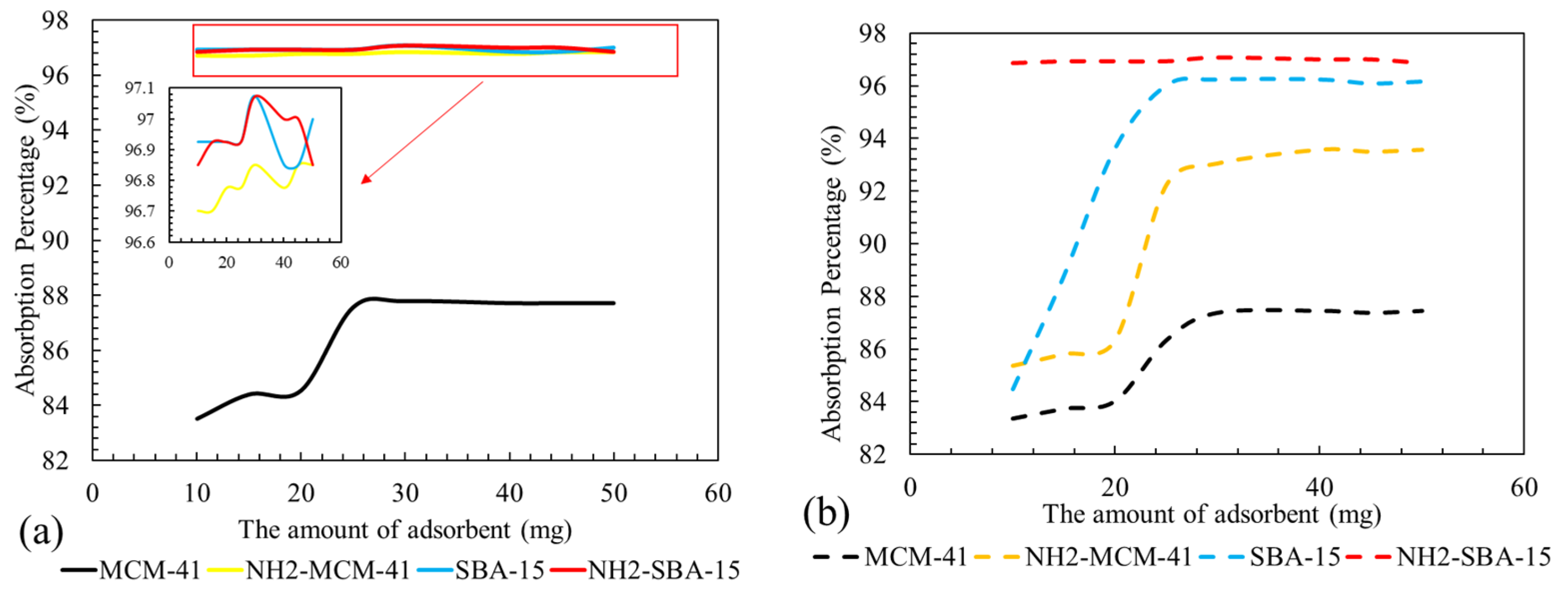
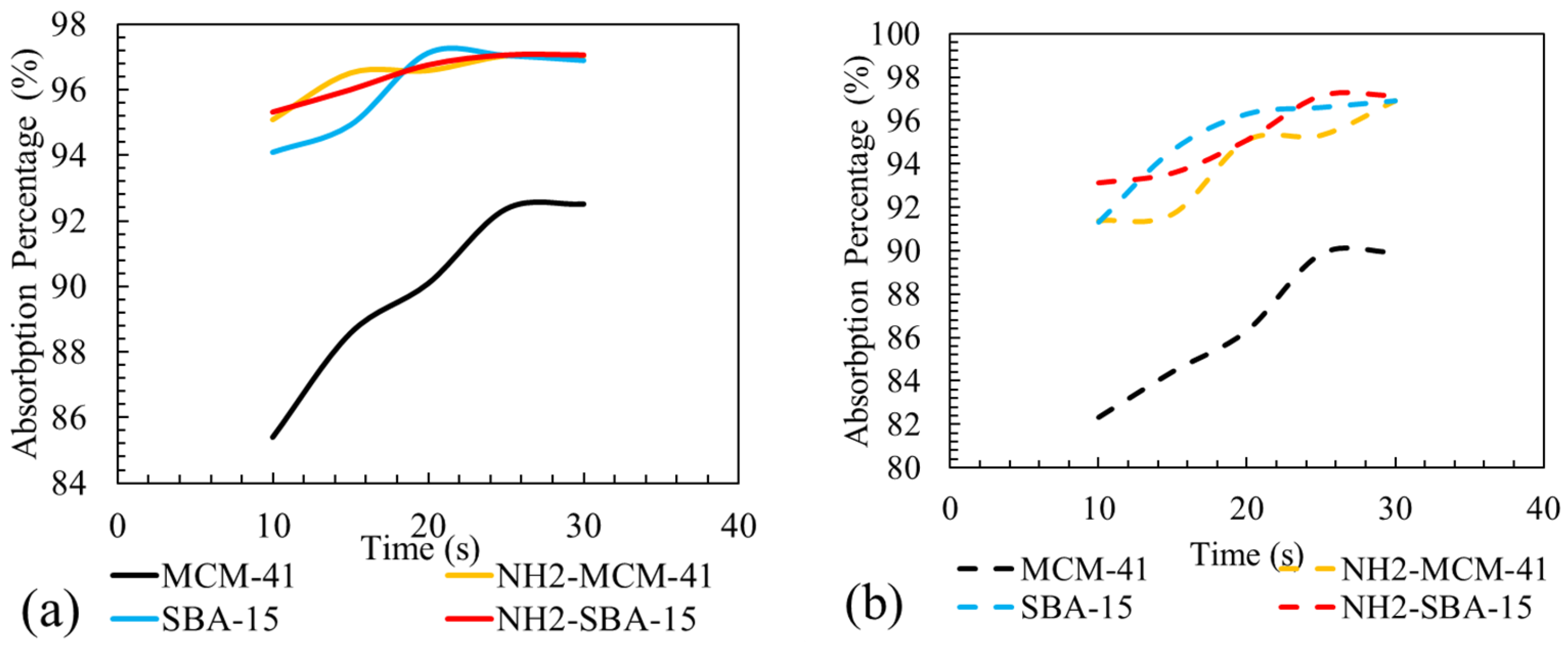
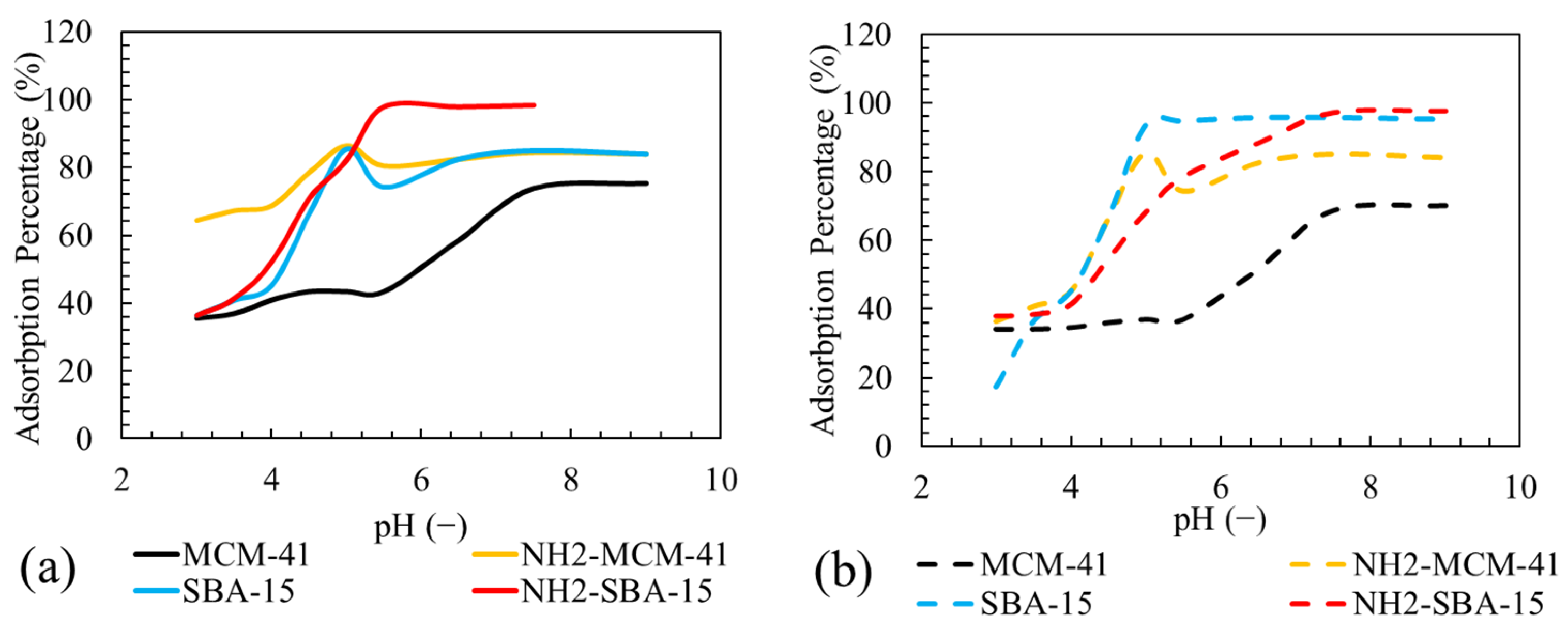
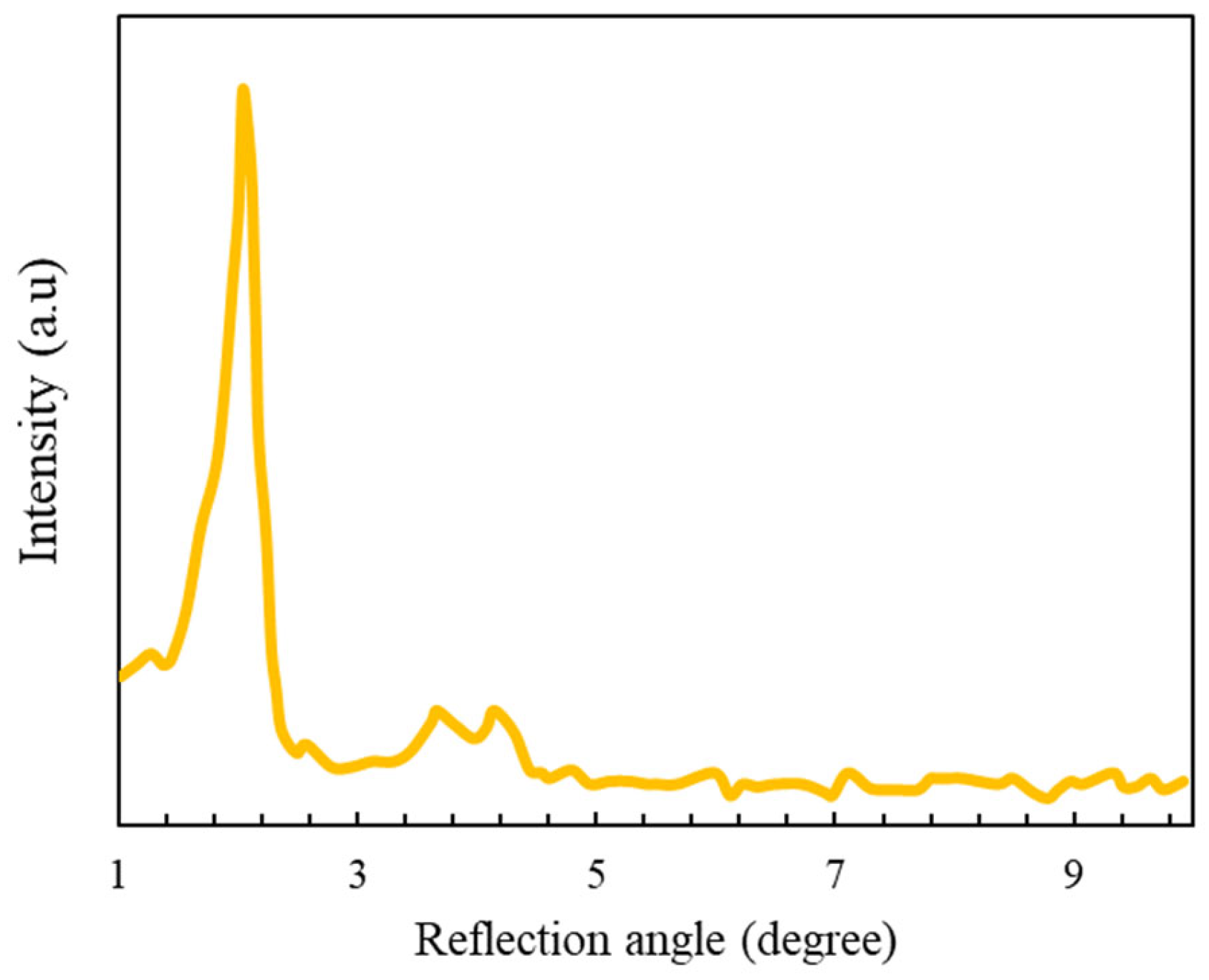
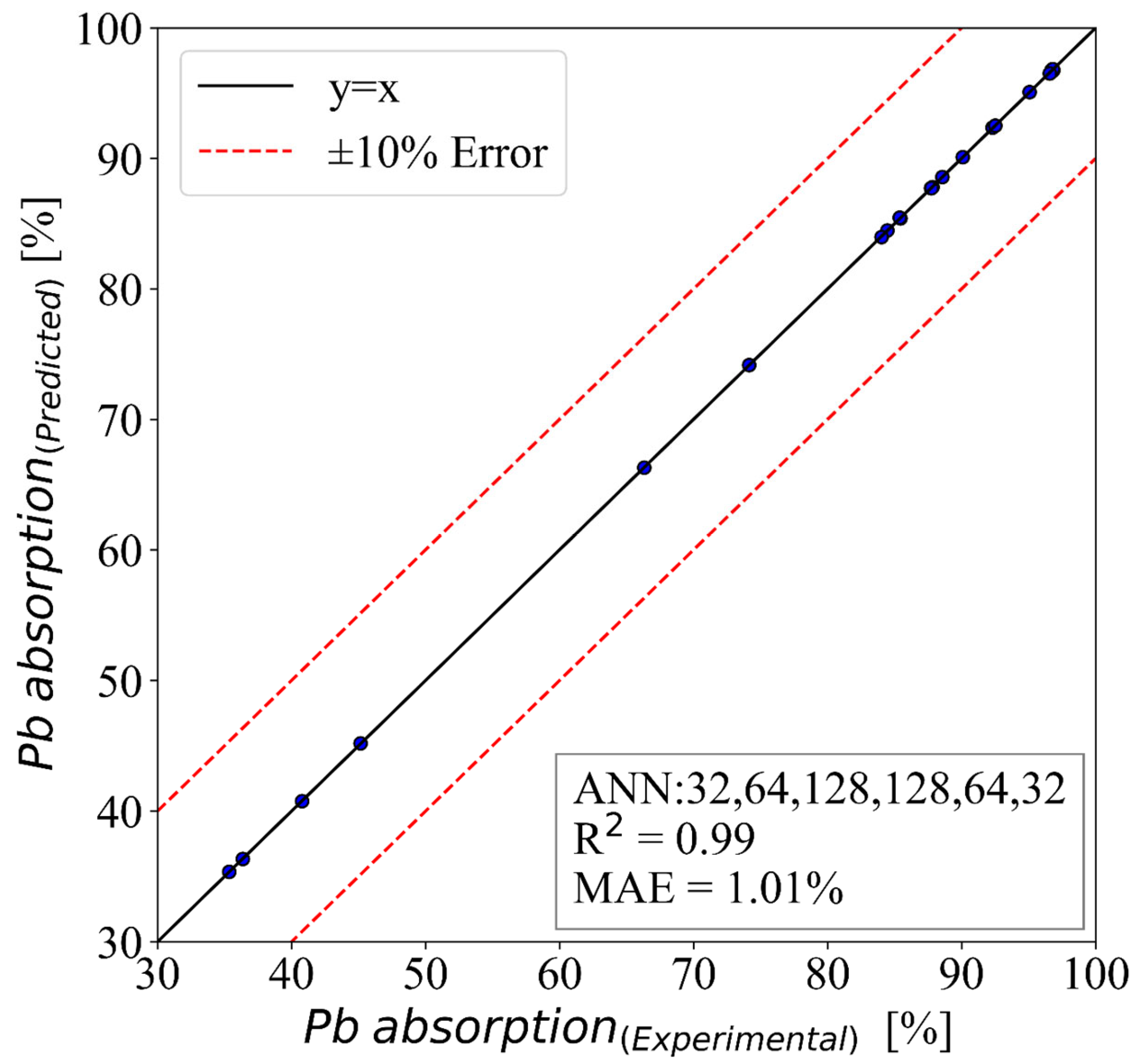
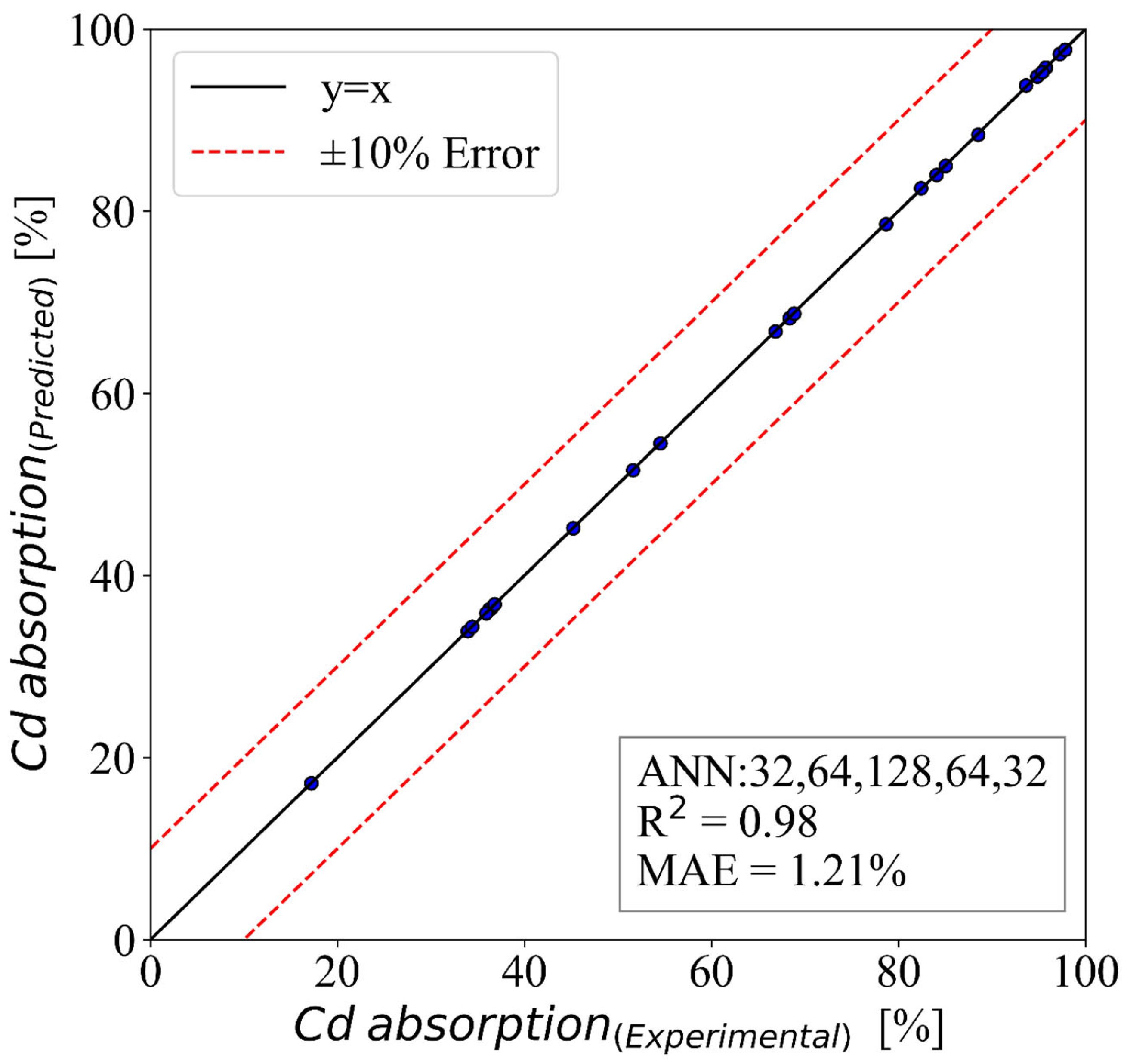
| MCM-41 | -MCM-41 | SBA-15 | -SBA-15 | ||||
|---|---|---|---|---|---|---|---|
| 77 | 77 | 86 | 83 | 95 | 95.5 | 95 | 95 |
| 79 | 78 | 79 | 80 | 94.5 | 93 | 92 | 95.7 |
| 81.5 | 81.4 | 76 | 85 | 91 | 90 | 95 | 96.3 |
| 83 | 83 | 82 | 78 | 86 | 85.5 | 95 | 96.1 |
| Model | Hidden Layers | Batch Size | Epochs |
|---|---|---|---|
| adsorption | (32, 64, 128, 128, 64, 32) | 4 | 35,000 |
| adsorption | (32, 64, 128, 64, 32) | 8 | 25,000 |
Disclaimer/Publisher’s Note: The statements, opinions and data contained in all publications are solely those of the individual author(s) and contributor(s) and not of MDPI and/or the editor(s). MDPI and/or the editor(s) disclaim responsibility for any injury to people or property resulting from any ideas, methods, instructions or products referred to in the content. |
© 2023 by the authors. Licensee MDPI, Basel, Switzerland. This article is an open access article distributed under the terms and conditions of the Creative Commons Attribution (CC BY) license (https://creativecommons.org/licenses/by/4.0/).
Share and Cite
Jery, A.E.; Aldrdery, M.; Ghoudi, N.; Moradi, M.; Ali, I.H.; Tizkam, H.H.; Sammen, S.S. Experimental Investigation and Proposal of Artificial Neural Network Models of Lead and Cadmium Heavy Metal Ion Removal from Water Using Porous Nanomaterials. Sustainability 2023, 15, 14183. https://doi.org/10.3390/su151914183
Jery AE, Aldrdery M, Ghoudi N, Moradi M, Ali IH, Tizkam HH, Sammen SS. Experimental Investigation and Proposal of Artificial Neural Network Models of Lead and Cadmium Heavy Metal Ion Removal from Water Using Porous Nanomaterials. Sustainability. 2023; 15(19):14183. https://doi.org/10.3390/su151914183
Chicago/Turabian StyleJery, Atef El, Moutaz Aldrdery, Naoufel Ghoudi, Mohammadreza Moradi, Ismat Hassan Ali, Hussam H. Tizkam, and Saad Sh. Sammen. 2023. "Experimental Investigation and Proposal of Artificial Neural Network Models of Lead and Cadmium Heavy Metal Ion Removal from Water Using Porous Nanomaterials" Sustainability 15, no. 19: 14183. https://doi.org/10.3390/su151914183
APA StyleJery, A. E., Aldrdery, M., Ghoudi, N., Moradi, M., Ali, I. H., Tizkam, H. H., & Sammen, S. S. (2023). Experimental Investigation and Proposal of Artificial Neural Network Models of Lead and Cadmium Heavy Metal Ion Removal from Water Using Porous Nanomaterials. Sustainability, 15(19), 14183. https://doi.org/10.3390/su151914183







